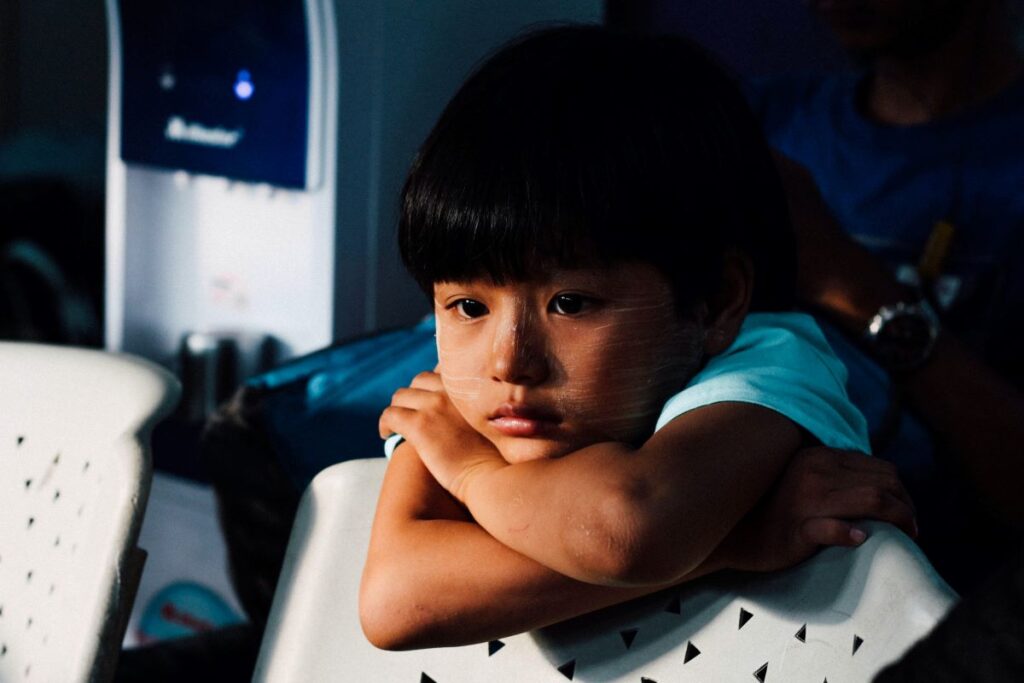
We have a worldwide estimation that 13.4% of all children have a mental disorder (Polanczyk et al., 2015). With mental health difficulties increasing in their prevalence, do we know which issues to be alert to in primary school children? No? Well then how can we possibly support them?
Rates of mental health difficulties are increasing in children and young people (Collishaw, 2015; Lu, 2019) and more people are willing to seek help, but we need to be able to offer access to suitable and effective interventions. Although only a quarter of those with a diagnosable mental health condition actually access support via Child and Adolescent Mental Health Services (CAMHS; Ford et al., 2007), the wait times are already too long (Children’s Commissioner for England, 2016, 2018).
Therefore, the role of schools in identifying and supporting children is increasing with two thirds of schools now reporting school-based counselling (Ford et al., 2007; Fazel et al., 2014). And although this is more common in secondary schools, it is still of note in primary schools, but of course a different approach is required due to the less developed cognition of children of this age. We need to better understand primary children’s needs to ensure effective intervention.
So, what do we know about individual counselling in primary schools (as determined by the British Association of Counselling and Psychotherapy)?
- More boys than girls access it
- Children with disabilities or those facing social adversity are overrepresented
- It can lead to clinically relevant improvements.
What we don’t know:
- The types of mental health difficulties that primary children most commonly present with
- The most common ages for different mental health difficulties
For the first time in the UK, the researchers wanted to a) describe the types of problems primary school children bring to counselling, and b) whether these alter depending on age and gender (Toth et al, 2020).

Mental health rates are increasing in children and young people, with schools often having to provide support and counselling, but little is known about which are the most common mental health difficulties experienced by primary school aged children.
Methods
8,134 children aged 4-11 from 291 primary schools in England, Wales and Scotland received one-to-one Place2Be counselling and their data were included in the final sample.
Place2Be is a UK mental health charity that provides school-based counselling, support and training. Referrals are usually by a member of teaching staff but can also be via parent/guardian or the child themselves. Their involvement follows a two-stage format:
Place2Be pre-counselling intervention
- Gather information about the child: age, gender, ethnicity, eligibility for free school meals, pupil premium, special educational needs, household composition
- Write up an assessment of the child after initial meetings with teachers, guardians/parents and the child
- Identify mental health issues (no limit to number identified)
- Rate severity of each mental health issue (mild, moderate, severe)
- Recommendation of intervention type
- Note the urgency of the case
- Set out the intervention plan
- Set out expected outcomes
Place2Be counselling intervention
- 12-36 weekly sessions of play-based counselling; the play activities are child-led
- Agreed ‘contract’ formed between counsellors and child including agreed boundaries and hoped-for outcomes
Results
Children ranged from showing 0-21 mental health difficulties, with a mean of 10 issues per child.
Mental health issues in primary school children
Of the 21 issues listed, the most common mental health issues in primary school children entering counselling are:
- Generalised anxiety (73%)
- Attention difficulties (71%)
- Low self-esteem (71%)
The least common issues are:
- Eating difficulties (15%)
- Self-destructive thoughts (13%)
- Suicidal ideation (5%)
Are there any differences in age?
Yes. The researchers found that primary school children showed different issues more commonly than secondary school children. Previous research has shown that secondary school children (adolescents) struggling with mental health difficulties are likely to experience depression, social phobia (Sadler, 2018), family tensions (Cooper, 2009) or self-destructive thoughts and suicidal ideation. These types of issues are rarely found amongst younger children, who were more commonly found to display types of anxiety including generalised or separation, or attention difficulties.
Are there any differences in gender?
Yes. Girls were statistically more likely to present issues with anxiety and family tensions. They were significantly, although only marginally so, more likely to show associations with eating difficulties.
Boys had more ratings of severe mental health issues. They were also statistically more likely to present issues with attention, mood swings, emotional behaviour, impulsivity, anger, callous behaviour and self-destructive thoughts or acts. They were significantly, although only marginally so, more likely to show associations with bullying other children.
Are Place2Be targeting an appropriate population?
Yes. Children in the sample, compared to their school population, were more likely to be male, White British, have a pupil premium status and have special educational needs. These characteristics have previously been associated with higher probabilities of having mental health issues in the UK (Sadler et al., 2018). This shows that Place2Be are working with vulnerable children when it comes to mental health difficulties.

Individual children seeking counselling were often found to display multiple mental health issues, with the most common being generalised anxiety. Boys were found to experience more severe levels of poor mental health but the issues differed between boys and girls.
Conclusions
This paper clearly illustrates the range, complexity and severity of mental health issues identified in UK primary school children at entrance to counselling. The authors found that the most common mental health issues are generalised anxiety, attention difficulties and low self-esteem, and that children were likely to experience more than one mental health issue (this sample had a mean of 10!). These issues are not the same as the top issues identified in secondary school pupils.
From the 21 mental health issues listed by Place2Be, some were much less common, such as eating difficulties and suicidal ideation. This is unsurprising considering that research has shown these types of mental health struggles to emerge in adolescence (age 11+). However, that there were cases of these issues identified in this sample of 4-11 year olds (15% eating difficulties and 5% suicidal ideation), highlights the need for counsellors to be ready to recognise these issues in younger children even if it contradicts expectation.

School staff and counsellors need to be alert to recognising that mental health issues in primary school children range in type, complexity and severity.
Strengths and limitations
This paper has a large sample from multiple schools across 3 years. The differences found between issues presented by boys (neurodevelopmental or behavioural) and by girls (emotional) in this study is representative of mental health issues identified in the UK (Sadler et al., 2018). This supports the ability of this study to generalise their findings to the wider population. There were also no significant differences between the years, which again, supports the robustness of this study.
It is important to emphasise however, that this paper has only considered a) children already referred to counselling and b) only those children assessed by counsellors from Place2Be (without a standardised mental health diagnostic criteria). The authors have shown that the mental health of primary school children is complex, and issues may be overlooked, yet the sample is restricted. For a more accurate picture, mental health data collected on whole school populations, with standardised scoring and diagnoses, would provide a better insight into the prevalence of issues (both clinically identified and yet-to-be clinically identified) in UK primary school children.

The sample is large and representative but focuses only on those children already referred for counselling.
Implications for practice
It must be made clear to all those working with children and young people that the mental health issues experienced differ between age groups. This means tailoring the support and interventions appropriately: for example, play therapy versus talking therapy. Also, that common occurrences are not the only occurrences: boys are typically seen to demonstrate externalising behaviours and girls are typically seen to demonstrate internalising symptoms, but this data has shown that issues that may be present in the unexpected genders (boys internalising and girls externalising).
Schools and counsellors require training in identifying the complex mental health needs of children. If they are to be the main support for these children (until the children are able to see clinical experts), then they must also receive training on how best to support a range of issues. Schools and counsellors must have direct links to, and support from, specialised external services (Department of Health & Social Care & the Department for Education, 2018).

Teachers and counsellors require training, and external help from specialists, on how best to support a range of mental health issues in primary school children.
Statement of interests
Dr Julia Badger is currently working on a multi-site RCT with paper authors Dr Rachel Hayes (Exeter) and Professor Tamsin Ford (Cambridge).
Links
Primary paper
Toth K, Samad L, Golden S, Hayes R, Ford T. (2020). What issues bring primary school children to counselling? A service evaluation of presenting issues across 291 schools working with Place2Be. Counselling & Psychotherapy Research. 1-9.
Other references
Children’s Commissioner for England (2016). Lightning review: Access to child & adolescent mental health services.
Children’s Commissioner for England (2018). Children’s mental health briefing.
Collishaw S. (2015). Annual research review: Secular trends in child and adolescent mental health. Journal of Child Psychology and Psychiatry, 56, 370-393.
Cooper M. (2009). Counselling in UK secondary schools: A comprehensive review of audit and evaluation data. Counselling and Psychotherapy Research, 9, 137-150.
Department of Health & Social Care & the Department for Education (2018). Government response to the first joint report of the education and health and social care committees of session 2017-19 on transforming children and young people’s mental health provision: A green paper and next steps (Cm 9627). London.
Fazel M, Hoagwood K, Stephan S, Ford T. (2014). Mental health interventions in schools in high-income countries. The Lancet Psychiatry, 1(5), 377–387.
Ford T, Hamilton H, Meltzer H, Goodman R. (2007). Child mental health is everybody’s business: The prevalence of contact with public sector services by type of disorder among British school children in a three-year period. Child and Adolescent Mental Health, 12(1), 13–20.
Lu W. (2019). Adolescent depression: National trends, risk factors, and healthcare disparities. American Journal of Health Behaviour, 43, 181-194.
Polanczyk GV, Salum GA, Sugaya LS, Caye A, Rohde LA. (2015). Annual research review: A meta-analysis of the worldwide prevalence of mental disorders in children and adolescents. Journal of Child Psychology and Psychiatry, 56(3), 345–365.
Sadler K, Vizard T, Ford T, Marcheselli F, Pearce N, Mandalia D, … McManus S. (2018). Mental health of children and young people in England, 2017. London, UK: NHS Digital.
Photo credits
- Photo by Taylor Wilcox on Unsplash
- Photo by Ben Wicks on Unsplash
- Photo by Tim Mossholder on Unsplash
- Photo by ThisisEngineering RAEng on Unsplash
- Photo by Chinh Le Duc on Unsplash
- Photo by Jess Bailey on Unsplash
